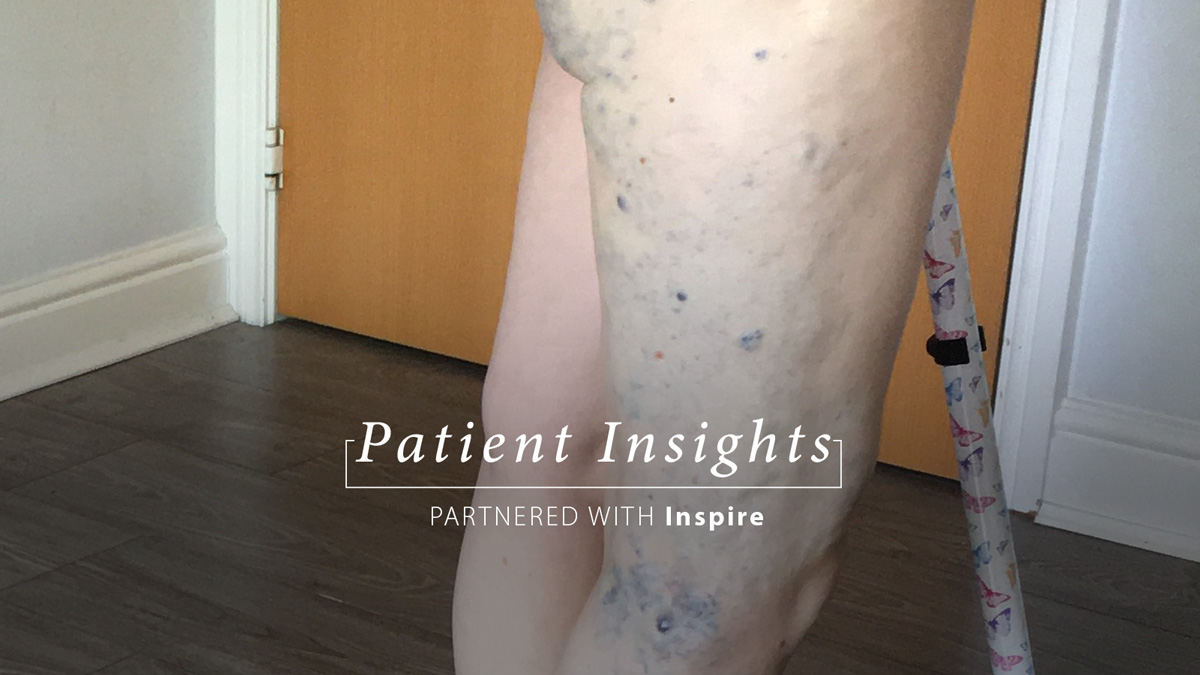Growing up different and not knowing why: My experience of rare vascular disorder KTS

Protracted diagnostic odysseys don’t only block access to rare disease treatments, they also leave people facing emotional turmoil all alone.
Growing up in Glasgow, Linsey Brady “felt like a freak” and did everything she could to hide what she was told was a vascular deformation on her leg from the rest of the world.
She was in her late 20s when, after years of struggling with her mental health and self-medicating with alcohol, she was finally diagnosed with Klippel Trenaunay Syndrome (KTS).
The diagnosis happened almost by accident, she tells pharmaphorum as part of our Patients Insights series.
“A friend who is a physiotherapist said they had a client with KTS and it looked like what I had. I looked it up on the internet and I knew straightaway,” says Linsey, 40.
After getting a referral from her GP, she travelled from Glasgow to the Royal Free, in London, for the half-hour appointment that would change her life.
“It was surreal,” she says, “none of the consultants I’d ever seen up until then had seen the condition. They just told me it was a vascular malformation.
“The consultant at the Royal Free told me I would need to take a daily aspirin for the rest of my life and that I should have been wearing compression stockings from a young age.”
Diagnostic relief
KTS is a rare congenital vascular disorder that tends to affect one or more limbs. Abnormal blood vessels form red or purple birthmarks and varicose veins, which in turn can impact bone and soft tissue growth.
In Linsey’s case, the condition affected the bones in her right leg, meaning that by the time she was diagnosed, she had already been through hip and knee replacement operations.
Despite the years of misunderstandings and misdiagnoses, she said she was relieved to finally have an answer – even if it had come too late to avoid extensive mental health and self-esteem issues.
“It was a relief to speak to other people to find out how they managed the condition,” says Linsey.
“I have always lived with pain, which has affected my mental health, but I was also intrigued to find out how others managed their appearance, because I had always hidden my condition.”
Just being able to speak to people who understood what she was going through, she says, made all the difference.
“I think if I had known what it was earlier, I would have got more help and support. I would have been able to meet people and get answers during those earlier years.
“It was different then. You didn’t have the internet and people didn’t fight to get the right care. My attitude was just to get on with things and pretend everything was OK.
“That meant I didn’t see anyone within the NHS for years, when I probably should have been going every six months to a year for X-rays and scans.”
Mental health and self-esteem
The reality was quite different. As a child, Linsey tried to keep up with her elder brothers, but as she entered her teenage years her disability became more apparent. Despite being in constant pain and walking with a limp, she refused to tell anyone what was wrong.
“My high school years were a struggle as I had mild dyslexia, I was in excruciating pain and was hiding my condition. Concentrating was difficult due to the pain and discomfort, but the teachers were unaware of this. They probably just thought I was moody and uninterested,” says Linsey, adding her fellow students would call her names like “cripple” and “peg leg”.
“From around the age of 14, I began to stress about my appearance. I couldn’t bear the sight of my condition, and I couldn’t cope with anyone seeing it. It makes me sad to think of all the summers I was so uncomfortable. I could have enjoyed so much more.”
Around this time that she started to use alcohol as a coping mechanism – a habit that got worse as she got older and her mobility started to worsen.
“I was struggling the whole time. When you are in constant pain and have a lack of mobility, it has a knock-on effect on your mental health. But I didn’t discuss it with anyone,” she says.
“I would meet friends at the weekends but always drank more than anyone else to block out the pain, and I never discussed my health.”
Framework for discussions
Receiving her diagnosis was a “massive change” as it finally gave Linsey the language and the permission to talk about her health problems.
“I connected with lots of people over the world with the condition. It was amazing to connect with people that had been through similar pain to see how they dealt with their situation,” she says.
Linsey even met a woman a couple of years younger than her who had been diagnosed at birth – despite living in the same city.
“I couldn’t believe someone living 18 miles away had the same condition. All the doctors and consultants I had ever had dealings with said they had never seen anyone with it, and were unable to give me the correct diagnosis.”
Asked her advice to anyone else in a similar position, Linsey highlights the importance of fighting for the right care and finding people to talk to.
“My condition is really severe, so I don’t know if being diagnosed earlier would have made a difference to the operations I have had or the pain I am in,” says Linsey, who now walks with a crutch.
“But if I had known earlier, I could have found the support and the help I needed. And maybe not wasted my teenage years and my 20s, when I was still mobile, stressing about my appearance.”
 Patient Insights is a monthly series that appears in partnership with Inspire, a company with an online support community of more than 2 million patients and caregivers worldwide.
Patient Insights is a monthly series that appears in partnership with Inspire, a company with an online support community of more than 2 million patients and caregivers worldwide.












